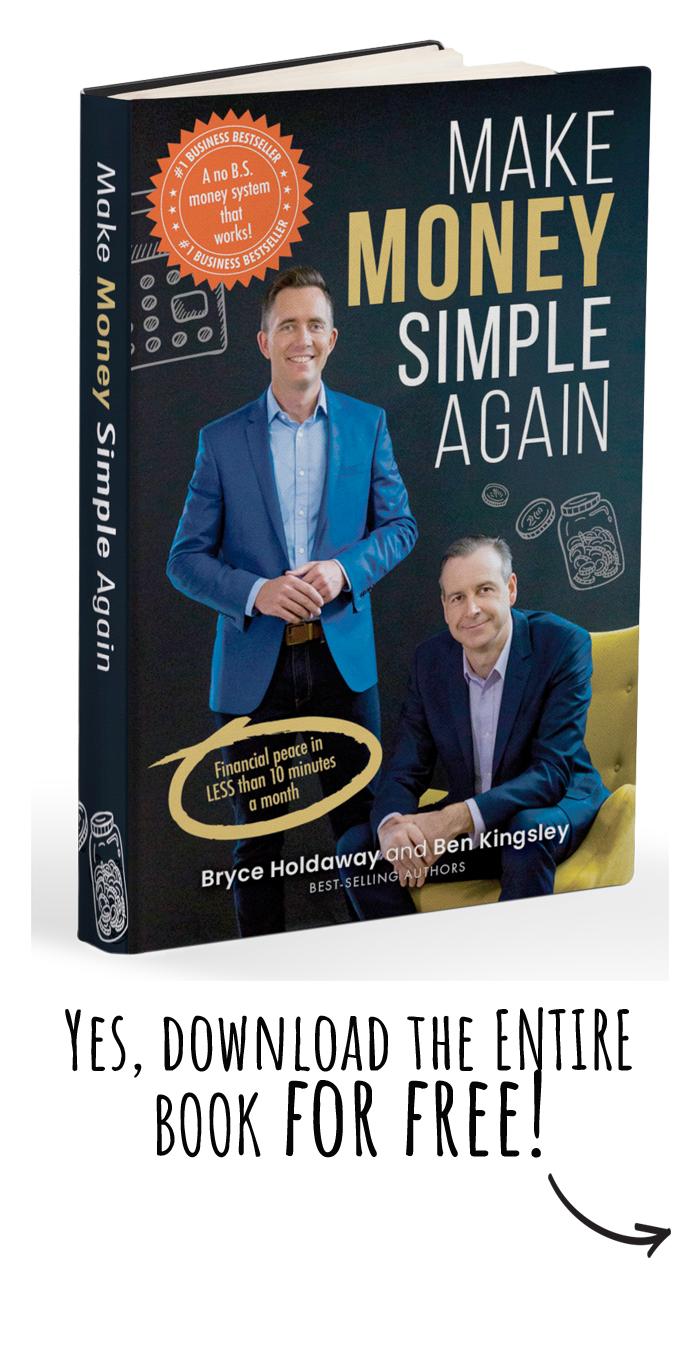Is your property HEALTHY? Look, this question probably isn’t what property investors commonly ask themselves… but after listening to this episode, we reckon’ you’ll start thinking completely differently about the health of your home & your investments!!
Full disclosure: our minds were blown! Sure, we all spend a significant amount of time in our homes, which has obviously increased since the great ‘work from home experiment’… but once you learn exactly how your property affects your physical and mental health… well, wow. This will TOTALLY shift your thinking!)
Here’s the deal: Today’s topic is largely around ‘healthy’ homes – with a unique spin on what’s called ‘passive houses’– that is, ultra-low energy buildings that are truly energy efficient, comfortable, affordable and ecological at the same time…
And ‘cos this is such a special episode, we have a guest co-host joining Bryce today…. PLUS, a very, very special guest!
Co-hosting today’s podcast as part of our AweGuest series is Amelia Lee, the architect behind Undercover Architect, an award-winning online resource to teach folks how to design, build or renovate their homes. To give you an idea, she’s been in the industry for over 25 years and has solid personal experience in the trenches as a “serial renovator” and has worked on more than 250 projects and counting.
And here with an interview that you won’t ever forget is Raphael Siket – Director of Ecolibria – a leading building biology service in Australia. He is a qualified building biologist and has completed the most comprehensive course of study currently in his field with an Advanced Diploma in Building Biology, a Bachelor of Commerce and – wait for it – is a Certified Mould Testing Technician (ACES) and past president of the Australasian Society of Building Biologists.
And, here’s where it gets EVEN MORE interesting……
… Let’s just say some guy called Bryce Holdaway first met Raph Siket under personal circumstances he’d rather not have been in…. and, yep, it had to do with the HEALTH (or rather ‘unhealth) of his home.
Oh, and get this… Raph has PERSONALLY built his own passive house… from a once- volume-built home. Yep.
Are you ready to see things COMPLETELY differently?
Tune in now for one heck of an episode – let us know what you think 😉
Free Stuff Mentioned
- Episode 249 | The 4-Step Framework To Renovate or Build Your Home… AND Enjoy it! – Chat with Amelia Lee
- Raph’s Videos to his Passive House journey!
- Amelia’s Podcast – Season 1: The most important thing when designing a home
- Amelia’s Podcast – Season 8: A Simple Guide to a Sustainable Home
- The Condensation Handbook by the ABCB
- My Efficient Electric Home free Facebook group
- National Housing Energy Rating Scheme (NatHERS) (which every new house and large-scale renovation has to get a minimum 6-star rating in)
- PHPP Energy Rating Tool (Used in Passivhaus)
Here’s What We Cover…
- 00:50 – Meet Amelia Lee…
- 02:01 – 12 years of living in construction sites!?!
- 03:21 – Amelia’s Mindset Minute!
- 04:48 – What was money like growing up for Amelia?
- 07:47 – Overcoming a scarcity mindset…
- 10:48 – Is ‘the hustle’ all it’s cracked up to be?
- 13:01 – Meet Raphael Siket…
- 14:32 – Money beginnings in South Africa…
- 16:36 – What does Raph teach his own kids about money?
- 17:00 – How Bryce met Raph! :- /
- 18:34 – The M Word: Where unhealthy houses start…
- 21:22 – How does Raph keep himself safe?
- 22:53 – How many buildings are impacted by condensation?
- 22:36 – Confronting property conversations…
- 24:22 – Can mould exposure cause depression?
- 22:50 – Remediation: Steps to remove mould from your home!
- 28:49 – Be aware of the quick paint job!!!
- 30:42 – Bryce’s BIG issue in the Alphington property…
- 27:26 – … What to do for properties in a humid environment!
- 34:43 – The massive clean-up!
- 36:35 – What is a Passive House?
- 38:42 – An overlooked pleasant surprise of passive houses!
- 40:50 – What’s an AVERAGE energy star-rating for homes?
- 42:00 – Average air changes per hour: Normal vs Passive House
- 43:32 – 5 Basic Principles Of A Passive House!
- 44:37 – WHY did Raph turn his home into a passive house??
- 46:35 — …They FILMED the whole thing!?!
- 47:01 – How many…!?! (oh dear!)
- 49:46 – What does a passive house feel like?
- 53:13 – How has living in a passive home affected Raph’s life??
- 54:13 – EMF electrical circuit: What’s the deal?
- 57:46 – … Umm, NO Wi-Fi in the house!?!
- And…
- 1:00:45 – How much does all this cost!?!
- 1:03:47 – How to source the on-demand light switches
- 1:08:39 – Paint choices for good health…
- 1:10:36 – The glue in your floorboards… (!)
- 1:14:47 – GAH! Don’t put your meter box here!!!!!!
- 1:18:18 – Do EMF Curtains work on meter boxes?
- 1:20:49 – Geeking out on the numbers!
- 1:21:48 – Solar Panels – are they worth the cost!?!
- 1:28:06 – Buying With The Sun – the best thing you can do!
- 1:29:17 – Amelia’s Life Hack!
- 1:31:11 – Changes coming for construction on condensation!

 Subscribe On Itunes
Subscribe On Itunes Subscribe On Android
Subscribe On Android
